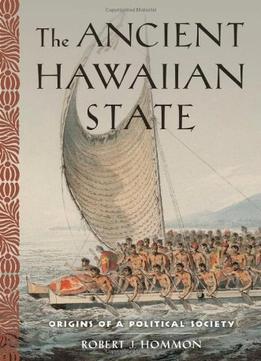
The Ancient Hawaiian State: Origins Of A Political Society
by Robert J. Hommon /
2013 / English / PDF
3.5 MB Download
Historians and archaeologists define primary states – "cradles of civilization" from which all modern nation states ultimately derive – as large-scale, territorially-based, autonomous societies in which a centralized, bureaucratic government employs legitimate power to exercise sovereignty. The well-recognized list of regions that witnessed the development of primary states is short: Egypt, Mesopotamia, the Indus Valley, China, Mesoamerica, and Andean South America. Drawing on archaeological and ethnohistorical sources, Robert J. Hommon demonstrates that Polynesia, with primary states in both Hawai'i and Tonga, should be added to this list. The Ancient Hawaiian State is a study of the ancient Hawaiians' transformation of their Polynesian chiefdoms into primary state societies, un-influenced by pre-existing states. The emergence of primary states is one of the most revolutionary transformations in human history, and Hawai'i's metamorphosis was so profound that in some ways the contact-era Hawaiian states bear a closer resemblance to our world than to that of their closely-related Eastern Polynesian contemporaries, 4,000 kilometers to the south. In contrast to the other six regions, in which states emerged in the distant, proto- or pre-literate past, the transformation of Hawaiian states is documented in an extensive body of oral traditions preserved in written form, a rich literature of early post-contact eyewitness accounts by participants and Western visitors, as well as an extensive archaeological record. Part One of this book describes three competing Hawaiian states, based on the islands of Hawai'i, Maui, and O'ahu, that existed at the time of first contact with the non-Polynesian world (1778-79). Part Two presents a detailed definition of state society and how contact-era Hawai'i satisfies this definition. Part Three provides political and cultural context by comparing the Hawaiian states with the Tongan state and five Polynesian chiefdom societies in the Solomon, Marquesan, and Society Archipelagoes. Part Four provides a model of the Hawaiian state emergence across 800 years of history. This innovative study will advance the analysis of Polynesian political development and shed light on the nature and dynamics of primary state formation worldwide.











